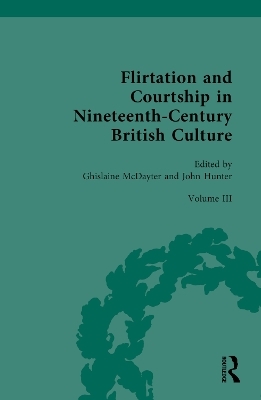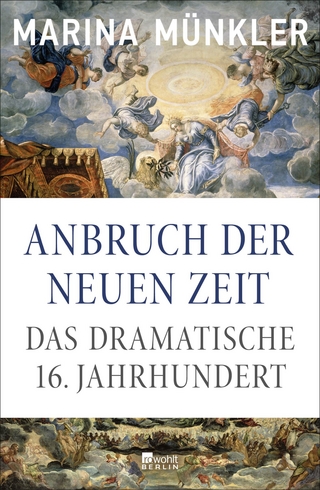
Flirtation and Courtship in Nineteenth-Century British Culture
Routledge (Verlag)
978-0-367-23175-0 (ISBN)
This is volume three of a three-volume set that brings together a rich collection of primary source materials on flirtation and courtship in the nineteenth-century. Introductory essays and extensive editorial apparatus offer historical and cultural contexts of the materials included
Throughout the long nineteenth-century, a woman’s life was commonly thought to fall into three discrete developmental stages; personal formation and a gendered education; a young woman’s entrance onto the marriage market; and finally her emergence at the apogee of normative femininity as wife and mother. In all three stages of development, there was an unspoken awareness of the duplicity at the heart of this carefully cultivated femininity. What women were taught, no matter their age, was that if you desired anything in life, it behooved you to perform indifference. This meant that for women, the art of flirtation and feigning indifference were viewed as essential survival skills that could guarantee success in life.
These three volumes document the many ways in which nineteenth-century women were educated in this seemingly universal wisdom, but just as frequently managed to manipulate, subvert, and navigate their way through such proscribed norms to achieve their own desires. Presenting a wide range of documents from novels, memoirs, literary journals, newspapers, plays, poetry, songs, parlour games, and legal documents, this collection will illuminate a far more diverse set of options available to women in their quest for happiness, and a new understanding of the operations of courtship and flirtation, the "central" concerns of a nineteenth-century woman’s life.
The volumes will be of interest to scholars of history, literature, gender and cultural studies, with an interest in the nineteenth-century.
Ghislaine McDayter is Professor in the Department of English, Bucknell Univesity, USA John Hunter is Professor of Comparative Humanities, Bucknell University, USA
Volume 3: Marriage and Conduct Unbecoming
General Introduction
Volume 3 Introduction
Editorial Notes
1. Wetenhall Wilkes, A letter of genteel and moral advice to a young lady . . . (1746) (London: L. Hawes, C. Clarke, and R. Collins, 1766), pp. 165-74.
2. ‘Debates in the Commons on the Clandestine Marriage Bill’ (1753), in William Cobbett (ed), Parliamentary History of Great Britain, 15 (London: Hansard, 1813), pp. 1-84.
3. Lady Pennington, An Unfortunate Mother’s Advice to her Absent Daughters, in a Letter to Miss Pennington (1761) (London: J. Walter, 1784), pp. 1-14, 111-17.
4. [Mrs. Grey], ‘The Matron’, The Lady's Magazine; Or Entertaining Companion for the Fair Sex, 10 (1779), pp. vol 10, 1779, pp. 17-19, 149-51, 585-87, 635-37, 686-88.
5. Arnaud Berquin, ‘The School for Step-Mothers’ and ‘The Affectionate Mother’ (1783), in The Children's Friend (London: J. Stockdale, 1788), vol. 4, pp. 67-83, 188-208.
6. William Hayley, A Philosophical, Historical, and Moral Essay on Old Maids, by a Friend to the Sisterhood (1785) (London: T. Cadell, 1793), pp. 1-18, 54-83.
7. ‘The Cruel Stepmother or the Unhappy Son’ (c.1785), The Ballads and Songs of Yorkshire (London: Bell and Daldy (1816), pp. 131-38.
8. The Trial of Divorce, at the Instance of Peter Williamson Printer in Edinburgh, Against Jean Wilson, Daughter of John Wilson, Bookseller in Edinburgh, His Spouse (Edinburgh: 1789), pp. iii-xxiv.
9. The Complete Art of Writing Love Letters; or, the Lover's Best Instructor (1795), (London: W. Franklin, 1800), pp. 22-26, 37-39, 91-95.
10. The Woman of Colour: A Tale . . . (London: Black, Parry & Co., 1808), pp.
11. The Female Instructor; Or, Young Woman's Companion (London: Nuttall, Fisher, and Dixon, 1811), pp. 188-99.
12. Ann Martin Taylor, ‘The Step-Mother’, in Practical Hints to Young Females, on the Duties of a Wife, a Mother, and a Mistress of a Family (London: Taylor & Hessey and J. Conder, 1815), pp. 121-29.
13. Hannah Maria Jones, Gretna Green; Or, The Elopement of Miss D--- with a Gallant Son of Mars, (London: John Tallis, 1821), pp. 3-16.
14. ‘The Cuckold’s Chronicle’ and ‘On the New Marriage Act,’ The Rambler’s Magazine; or Fashionable Emporium . . . vol. 1 (London: Benbow 1822), pp. 5-8, 59-64, 357-59.
15. Mrs. William Parkes, Domestic Duties; or, Instructions to Young Married Ladies, on the Management of Their Households . . ., (London: Longman, Hurst, Rees, Orme, Brown, Green, 1825), pp. 22-40.
16. Arthur Freeling, The Young Bride's Book; Being Hints for Regulating the Conduct of Married Women With a Few Medical Axioms (London: Henry Washbourn, 1839), pp. 51-66, 117-20.
17. Charlotte Bury, The Maneuvring Mother (1842) (London: G. Routledge, 1858), pp. 163-209.
18. Peter Orlando Hutchinson, Chronicles of Gretna Green (London: Richard Bentley, 1844), vol. 2, pp. 45-87.
19. Poor Scotch Old Maids, And How to Avoid Becoming One . . . (Edinburgh: Johnstone and Hunter, 1851), pp. 3-41.
20. James Hogg, ‘Provision for Aged Females’, in Hogg’s Instructor, vol. 7 (Edinburgh: James Hogg, 1851), pp. 310-12.
21. Eliza Cook, ‘Poor Genteel Women’ (January 10, 1852), Eliza Cook’s Journal, 6 (London: Charles Cook, 1851-52), pp. 173-75.
22. The Etiquette of Courtship and Matrimony: with a Complete Guide to the Forms of a Wedding (London: David Bogue, 1852), pp. 48-61, 86-95.
23. Caroline Norton, A Letter to the Queen on Lord Chancellor Cranworth's Marriage and Divorce Bill (London: Longman, 1855), pp. 3-31.
24. ‘The Economies and Duties of the Marriage State’, How to Woo; How to Win; and How to Get Married . . . (Glasgow: W. R. M’Phun, 1856), pp. 44-55.
Index
| Erscheinungsdatum | 28.07.2022 |
|---|---|
| Reihe/Serie | Routledge Historical Resources |
| Verlagsort | London |
| Sprache | englisch |
| Maße | 156 x 234 mm |
| Gewicht | 453 g |
| Themenwelt | Geschichte ► Allgemeine Geschichte ► Neuzeit (bis 1918) |
| Geschichte ► Teilgebiete der Geschichte ► Kulturgeschichte | |
| Geschichte ► Teilgebiete der Geschichte ► Religionsgeschichte | |
| ISBN-10 | 0-367-23175-1 / 0367231751 |
| ISBN-13 | 978-0-367-23175-0 / 9780367231750 |
| Zustand | Neuware |
| Informationen gemäß Produktsicherheitsverordnung (GPSR) | |
| Haben Sie eine Frage zum Produkt? |
aus dem Bereich


